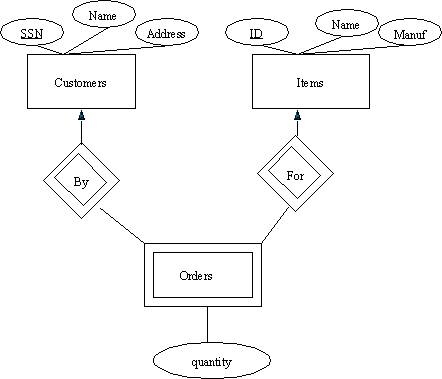(Courtesy Ullman) Consider an E/R diagram involving
a four-way relationship between
four entity sets A, B, C and D. There are arrows pointing to only the sets
C and D. Below are three possible relationship sets for
this diagram:
-----------------
A | B | C | D
-----------------
a1 | b1 | c1 | d1
a1 | b1 | c1 | d2
-----------------
-----------------
A | B | C | D
-----------------
a1 | b1 | c1 | d1
a1 | b1 | c2 | d2
-----------------
-----------------
A | B | C | D
-----------------
a1 | b1 | c1 | d1
a1 | b2 | c1 | d1
-----------------
You may assume that different symbols stand for different values,
e.g., d1 is definitely not the same as d2. Which of the above could
not be the relationship set?
- Only the first
- Only the first and second
- Only the second
- All of the three




